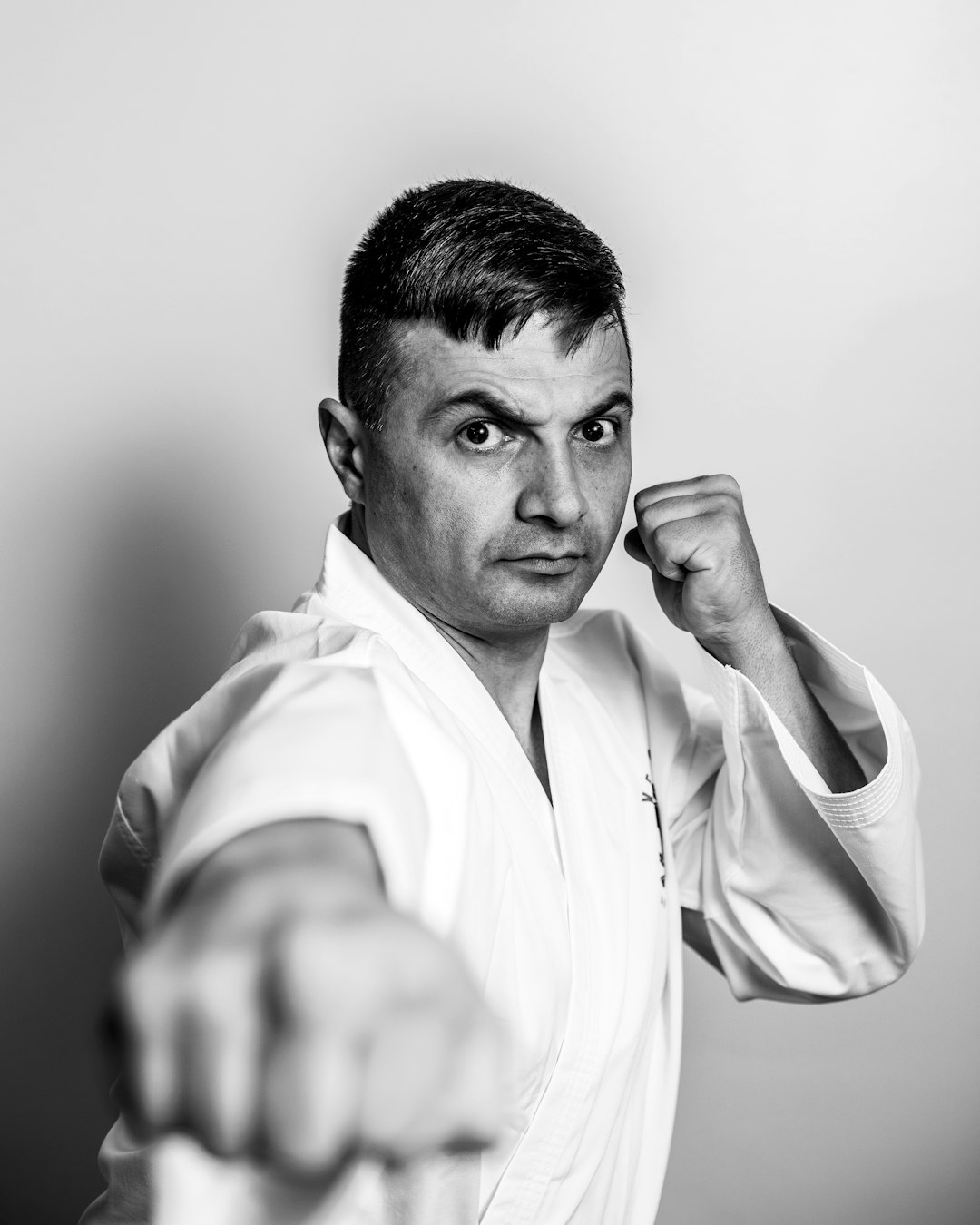To effectively begin a home-based karate regimen, it's essential to equip yourself with the right gear for both safety and optimal performance. A high-quality karate gi is non-negotiable, offering support for various techniques while also managing sweat and providing protection. Beyond the gi, additional equipment like punching bags, kick shields, stability balls or mats, and a suitable training space are beneficial for solo practice and mimic a traditional dojo setting. Karate requires proficiency in both physical skills and mental acuity; beginners should focus on mastering foundational stances and basic techniques such as punches, kicks, blocks, and strikes, using household items as targets and online resources to refine movements. Regular practice with mindfulness is key to improvement, leading to the eventual readiness for advanced training and the wearing of a karate uniform. As practitioners advance, they must integrate complex techniques into their routine, refining kata performance and enhancing striking, kicking, and blocking abilities through targeted drills and exercises like lunges, squats, and core strength workouts. Motivation can be sustained by creating a structured training schedule with rest periods, maintaining a journal to track progress, and regularly filming techniques for self-assessment. This approach ensures a rewarding karate practice that allows for both progression and reflection on personal achievements within the discipline.
embark on a home training journey with our comprehensive guide to karate. Whether you’re a novice or looking to refine your skills, this article outlines the essential equipment for your practice, including the karate uniform called a keikogi. We’ll guide you through mastering basic stances and techniques, offer drills to enhance power and precision in your kicks and punches, and introduce intermediate and advanced moves to elevate your solo training. Stay motivated and track your progress with our practical tips, ensuring your home karate practice thrives.
- Essential Equipment for Home Karate Training: Outfitting Yourself with a Karate Uniform and More
- Mastering Basic Stances and Techniques: A Step-by-Step Guide for Beginners
- Developing Power and Precision: Effective Drills to Improve Your Kicks and Punches at Home
- Advancing Your Skills: Intermediate and Advanced Karate Moves to Practice Alone
- Staying Motivated and Tracking Progress: Tips for Consistency and Self-Assessment in Karate Training
Essential Equipment for Home Karate Training: Outfitting Yourself with a Karate Uniform and More
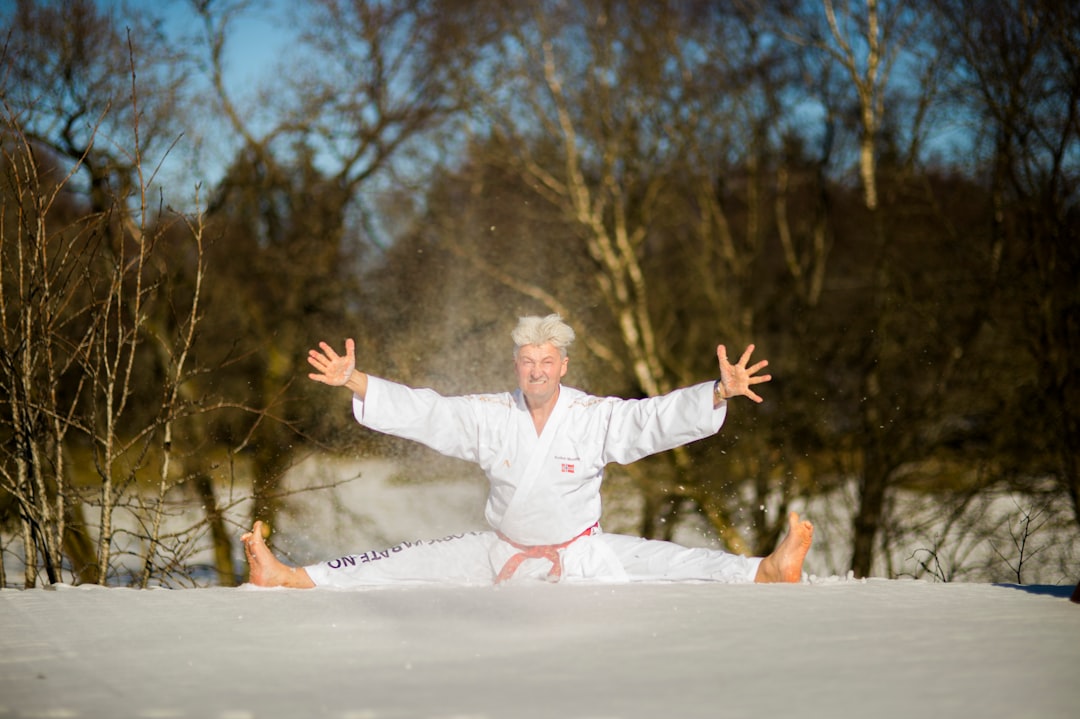
Embarking on a home karate training regimen requires the right equipment to ensure proper form and safety. A key item on your checklist should be a high-quality karate uniform, also known as a gi. This garment isn’t just for ceremonial purposes; it’s designed to allow for a full range of motion during practice, enabling you to execute kicks, blocks, and strikes effectively. Additionally, the uniform helps absorb sweat and provides a layer of protection against mats and flooring. Are you equipped with a well-fitting karate gi that moves with your body? If not, consider investing in one that is both durable and comfortable, as it will be your constant training companion.
Beyond the essential gi, other equipment can enhance your training experience at home. A sturdy punching bag or kick shield can be invaluable for practicing strikes and kicks without the need for a partner. Stability balls or mats can serve as soft targets for knee and elbow strikes, as well as provide a cushioned surface for exercises on the ground. Do you have a dedicated space with adequate flooring to minimize injury from falls or impact? Ensure your home environment supports your karate practice by considering these additional tools that mimic the presence of a training partner or dojo setup.
Mastering Basic Stances and Techniques: A Step-by-Step Guide for Beginners
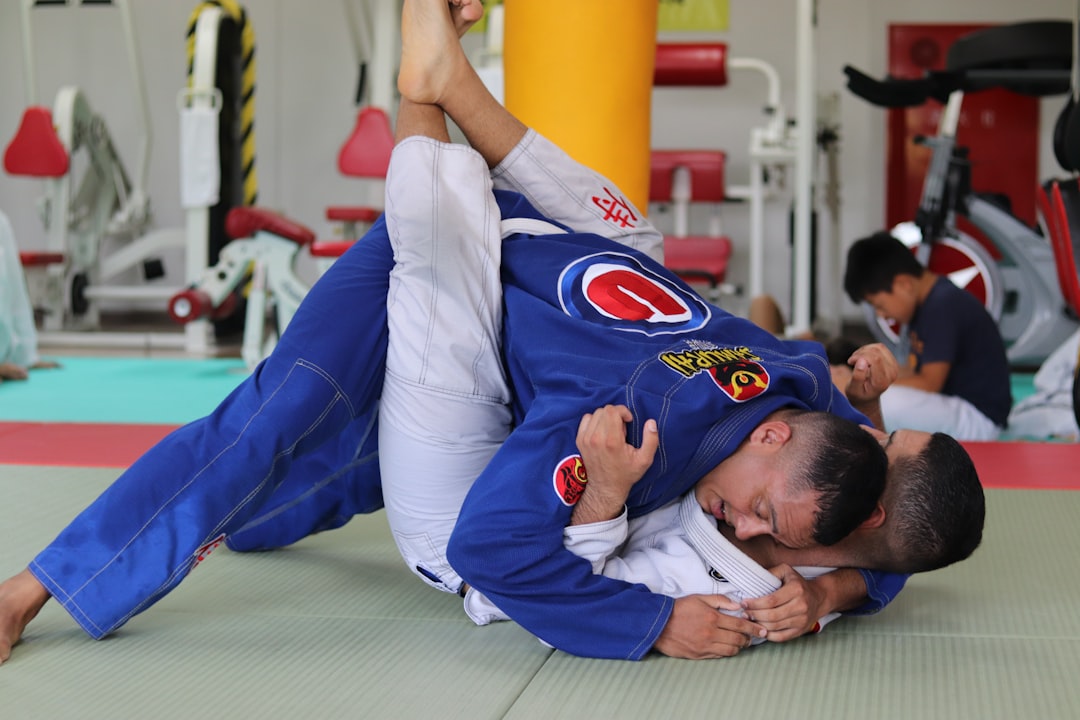
Karate is a discipline that emphasizes mastery of both physical techniques and mental focus. For beginners looking to train karate at home, starting with the foundational stances and techniques is crucial. The first step in this journey is to understand and practice the basic stances that form the cornerstone of karate movement. A karateka must be comfortable in the kiba dachi (large stance), zenkutsu dachi (front stance), and heisoku dachi (closed stance), among others. Each stance not only supports different techniques but also promotes balance and stability, which are essential for advanced maneuvers.
Once the stances are familiar, one should progress to learning the fundamental techniques. These include punches, kicks, blocks, and strikes. For instance, mastering the correct form of a jab, cross, roundhouse kick, and upward block is vital. Beginners should focus on the mechanics of each technique, ensuring that their movements are precise and controlled. A common question among novices is, “How can I practice these techniques without a partner?” The answer lies in using household objects as targets or drilling the movements slowly and with intention. Additionally, video resources and online tutorials can provide visual guidance to help you perfect each motion. Remember, consistency and mindfulness are key; regular practice will lead to improvement and, eventually, proficiency in these basic karate techniques.
Developing Power and Precision: Effective Drills to Improve Your Kicks and Punches at Home

To hone your power and precision in karate, particularly in executing kicks and punches, it’s crucial to engage in targeted training drills at home. A fundamental aspect of this training is understanding the mechanics behind each technique. For instance, when practicing kicks, focusing on the hip rotation and weight transfer can significantly enhance both power and accuracy. Donning your karate uniform, you’re ready to begin. Are leg muscles the primary focus for developing powerful kicks? Yes, the strength and flexibility of your legs play a vital role in generating force behind each kick. To improve your kicks, incorporate exercises like lunges, squats, and calf raises into your routine to build lower body strength. Additionally, practicing kicking pads or a heavy bag can simulate the resistance you’d encounter during sparring, allowing you to refine the technique and power of your kicks.
Precision in punches is as important as the force behind them. To refine your punching accuracy, consider drills that emphasize target focus. Where does one focus when aiming to improve precision with punches? One should focus on hitting specific areas of the target with consistency. A great practice is to use a mitt-clad partner or a focus mitt to mimic an opponent’s defenses, which can help you learn to adjust your strikes for optimal impact. Furthermore, shadow boxing with a clear mental image of your targets can also aid in improving punch precision. Remember to integrate exercises that enhance your core strength and hand speed, such as medicine ball throws and speed bag workouts, to complement your karate training at home.
Advancing Your Skills: Intermediate and Advanced Karate Moves to Practice Alone
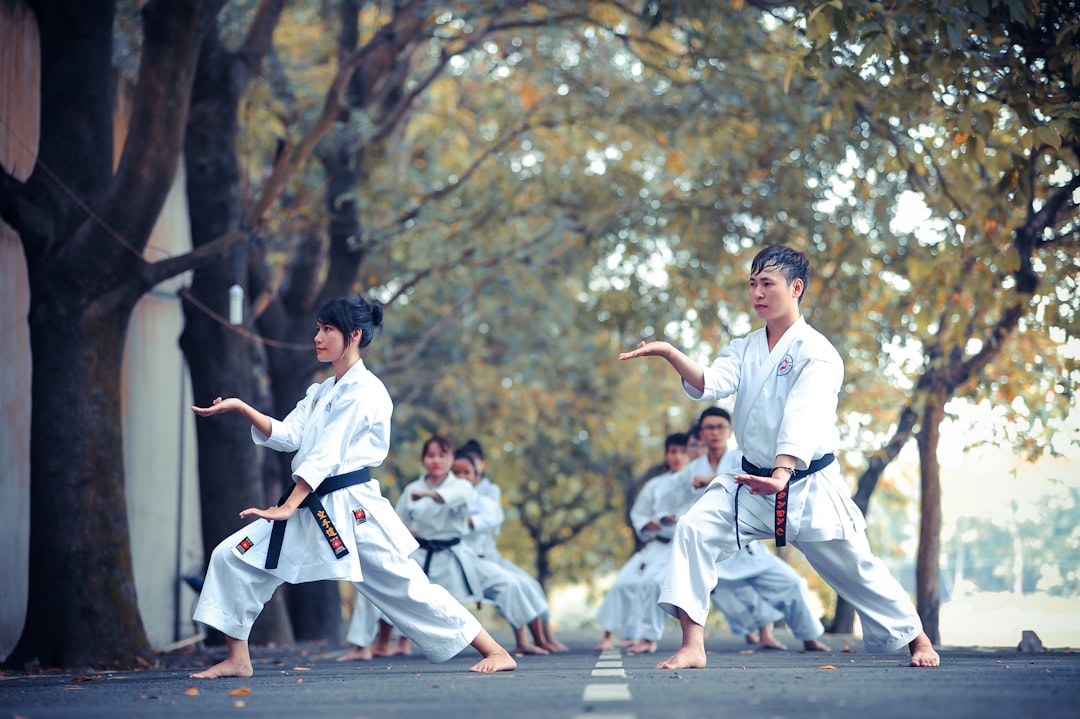
As you progress from beginner to intermediate and advanced levels in karate, incorporating more complex techniques into your home training regimen can be both challenging and rewarding. To advance your skills effectively, it’s beneficial to practice movements that challenge your coordination, balance, and stamina. Intermediate practitioners should focus on perfecting their kata, as these choreographed sequences are the foundation of karate technique. For example, you might wonder how to execute a more advanced kata such as the Kanku or Bassai with precision. By studying these kata through videos or instructional materials and gradually building up your muscle memory, you can perform them with greater fluidity and confidence. Advanced karateka often turn their attention to advanced strikes, kicks, and blocks. Questions like “How can I practice the mawashi geri (roundhouse kick) with more power and precision?” or “What are the best ways to refine my defense techniques, such as uke waza (blocking techniques)?” are common among those looking to elevate their karate practice. To enhance your roundhouse kick, you can use a heavy bag or padded post to target, ensuring you maintain proper form and technique. For improved blocking skills, drills that involve partner work or practicing with a bamboo dummy can simulate real combat scenarios and improve your speed and accuracy. Remember, consistent practice and dedication are key to mastering these advanced moves alone at home. With each session, focus on one or two techniques, ensuring you understand the proper execution before moving on to more complex maneuvers. This incremental approach will help you steadily advance your karate skills while training in the comfort of your own space.
Staying Motivated and Tracking Progress: Tips for Consistency and Self-Assessment in Karate Training
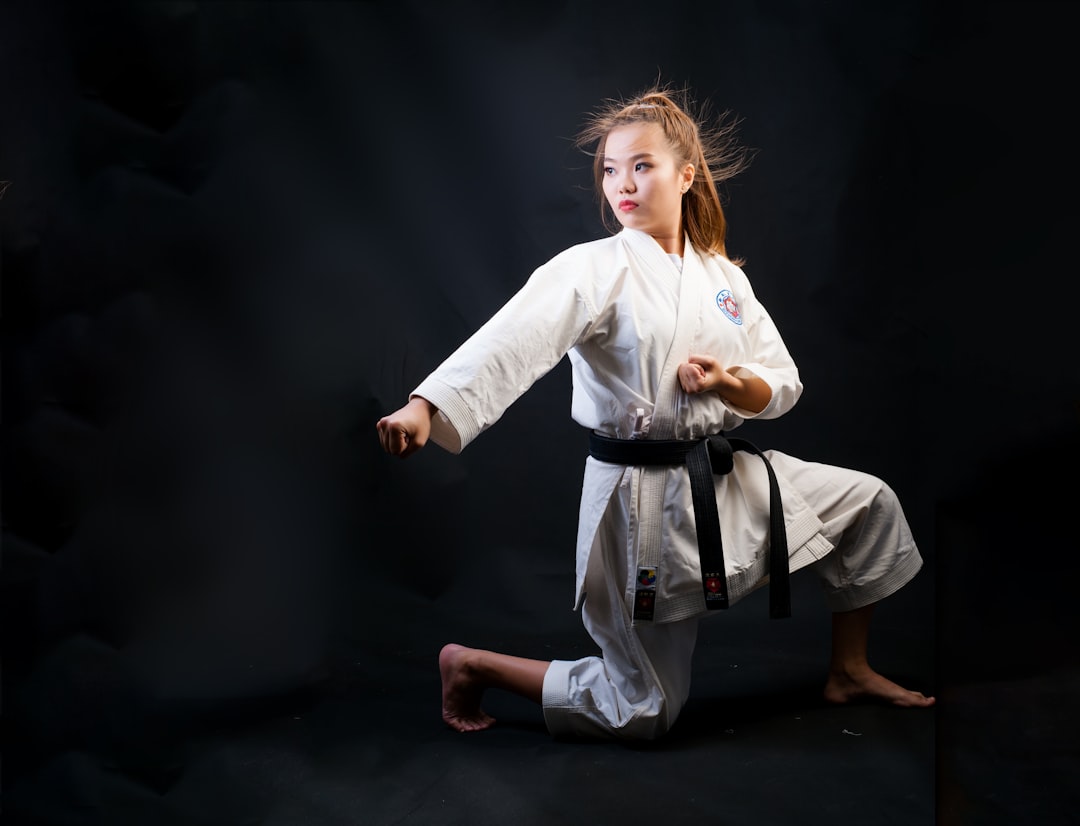
Keeping your karate practice engaging and progress-oriented is crucial for maintaining motivation, especially when training at home. One effective strategy to stay motivated is to establish a clear routine that fits into your daily schedule. This routine should include both training sessions and moments of rest to ensure your body has time to recover. Regularly reviewing your goals and the reasons why you started practicing karate can also reignite your passion for the sport. Additionally, setting incremental objectives helps in tracking progress and provides a sense of accomplishment as each goal is met.
When it comes to self-assessment, keeping a training journal is an excellent way to monitor your advancements. In this journal, you can record techniques practiced, strengths and areas for improvement, and how your body responds to different exercises. Another aspect to consider is the use of a karate uniform, which not only serves as appropriate attire for practice but also provides tactile feedback during movements, enhancing your awareness and technique. How often do you practice? Recording the frequency of your training sessions will help you understand your progress over time. You should aim to practice regularly, ideally several times a week, ensuring consistency in your training regimen. Are there specific techniques or kata you’re focusing on mastering? By periodically revisiting and filming these, you can objectively evaluate your performance and note any improvements or adjustments needed. This self-assessment is key to refining your skills and achieving a higher level of proficiency in karate.
In conclusion, embarking on a home karate training regimen can be both rewarding and effective with the right approach and equipment. Beginners should start by acquiring a reliable karate uniform and other essential gear to ensure comfort and safety during practice. By mastering fundamental stances and techniques through a structured step-by-step guide, one can lay a solid foundation for more advanced maneuvers. As your skill set progresses, incorporating targeted drills to enhance power and precision in your kicks and punches will further refine your technique. Advanced karate enthusiasts can continue to push their limits by practicing intermediate and advanced moves alone. Consistency is key, and staying motivated through self-assessment and tracking progress will keep you on the path to achieving your martial arts goals. Whether you’re a novice or an experienced practitioner, training at home can be a fulfilling journey that honors the discipline and tradition of karate.
